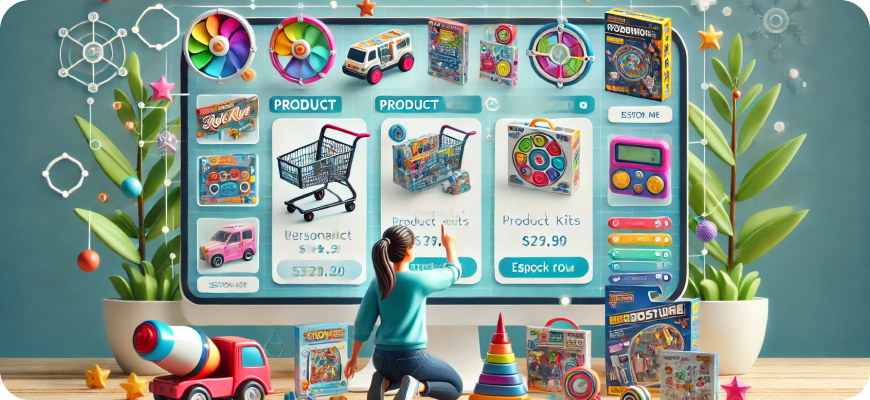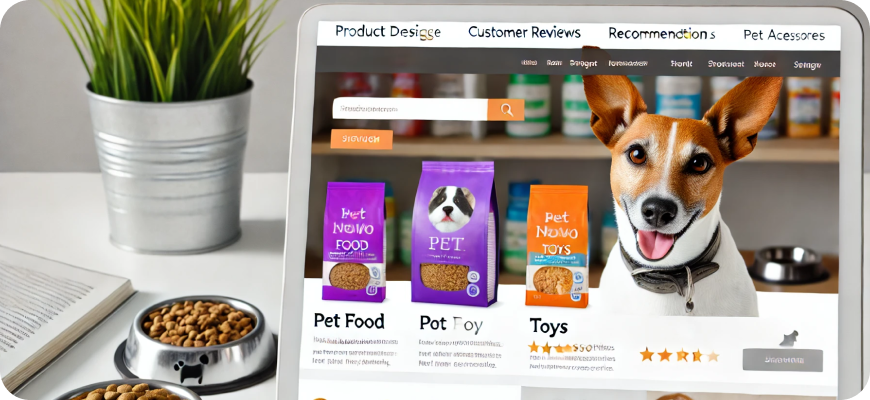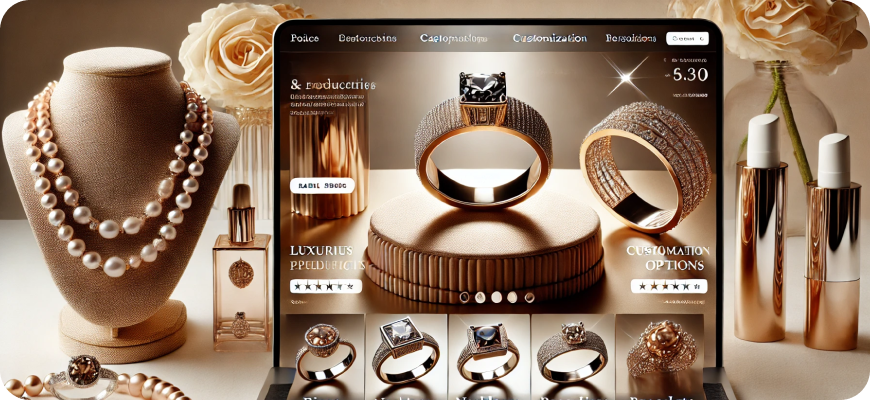Tactics to Build Customer Trust and Loyalty
In the competitive landscape of e-commerce, establishing trust and building customer loyalty are critical for long-term success. Trust encourages first-time purchases, while loyalty fosters repeat business and brand advocacy. Customers are more likely to return to brands they trust, and loyal customers provide valuable word-of-mouth promotion that can further grow your business. This article explores actionable tactics to help e-commerce brands build and sustain customer trust and loyalty, from transparency and customer service excellence to personalized experiences and reward programs.
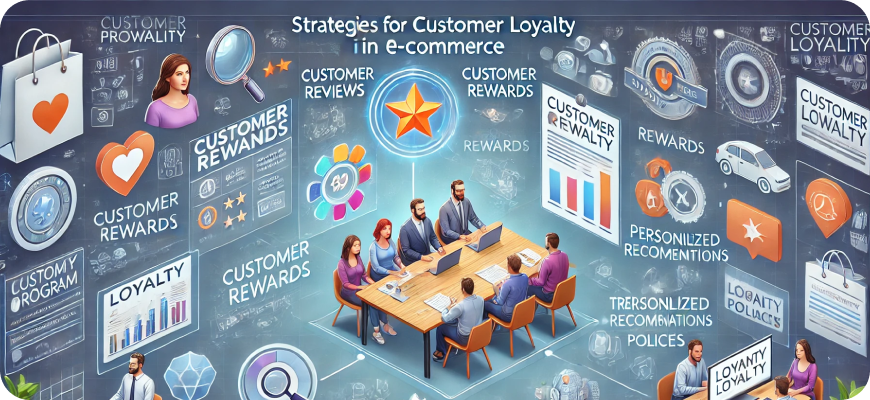
1. Prioritize Transparency and Honesty
Transparency is foundational for trust. When a brand is open about its processes, pricing, and policies, customers feel valued and respected. Being transparent can also help manage customer expectations, reducing friction and fostering long-term loyalty.
Key Tactics for Transparency:
- Provide Clear Product Descriptions: Detailed, accurate descriptions that include product specifications, dimensions, and use cases can help customers make informed decisions.
- Display Honest Customer Reviews: Show both positive and negative reviews to give potential buyers a balanced view of your products. This demonstrates that you value authenticity.
- Be Upfront About Shipping and Return Policies: Clearly outline shipping costs, expected delivery times, and return policies. Customers should know what to expect before they make a purchase.
- Share Company Values and Processes: Let customers know about your sourcing, sustainability practices, or charitable initiatives. Customers are more likely to trust brands that align with their values.
Benefits:
Transparency reduces misunderstandings, helps prevent dissatisfaction, and reassures customers that your brand has integrity. This, in turn, fosters a stronger bond with customers.
2. Focus on Excellent Customer Service
Providing exceptional customer service is a surefire way to build trust and encourage loyalty. Customers who feel valued are more likely to stay loyal to a brand and recommend it to others.
Customer Service Strategies:
- Train Support Staff Thoroughly: Invest in training that covers product knowledge, communication skills, and conflict resolution. Well-trained staff can turn a negative experience into a positive one.
- Offer Multiple Support Channels: Provide options like live chat, email, and phone support, allowing customers to choose their preferred contact method.
- Respond Promptly: Quick response times are crucial in e-commerce. Aim to reply to inquiries within a few hours and resolve issues as quickly as possible.
- Follow Up on Customer Concerns: After resolving a support query, follow up with the customer to ensure they are satisfied. This extra step shows that you care about their experience.
Benefits:
A responsive and compassionate customer service team can turn dissatisfied customers into loyal advocates. By prioritizing customer service, you demonstrate that you value your customers’ time and satisfaction.
3. Build a Strong Social Media Presence
Social media is an effective platform for establishing trust, connecting with customers, and building a community around your brand. A consistent, authentic social media presence makes your brand more approachable.
Social Media Tactics:
- Share Behind-the-Scenes Content: Give customers a glimpse into your operations, team, and daily activities. This humanizes your brand and fosters a sense of transparency.
- Engage with Followers: Respond to comments, acknowledge positive feedback, and address negative feedback respectfully. Engaging with followers helps build a loyal community.
- Encourage User-Generated Content (UGC): Inspire customers to share photos or videos of your products. Reposting UGC on your social channels not only builds trust but also creates a sense of community.
- Use Social Proof: Share testimonials, customer reviews, and case studies to showcase positive experiences with your products.
Benefits:
A well-managed social media presence builds trust by showing that you’re active, approachable, and ready to engage. It also provides a platform for loyal customers to connect with each other, strengthening your brand community.
4. Implement a Loyalty Program
Loyalty programs reward repeat customers, making them feel valued and encouraging future purchases. By offering rewards for specific actions, you incentivize customers to keep engaging with your brand.
Loyalty Program Ideas:
- Points-Based System: Let customers earn points for every purchase, which can be redeemed for discounts or exclusive products. For example, “Earn 1 point for every dollar spent; 100 points = $5 off.”
- Tiered Rewards: Offer different loyalty tiers based on customer spending. Higher tiers could unlock exclusive perks, such as faster shipping or early access to new products.
- Referral Incentives: Encourage loyal customers to refer friends and family by offering rewards for successful referrals. This builds trust through word-of-mouth promotion.
- Birthday and Anniversary Rewards: Celebrate customers’ birthdays or brand anniversaries by offering special discounts or gifts, making them feel appreciated.
Benefits:
Loyalty programs increase customer retention, incentivize spending, and create a positive feedback loop where customers feel rewarded for their continued engagement.
5. Personalize the Customer Experience
Personalization demonstrates that you understand your customers’ preferences, which fosters trust and loyalty. Tailoring the shopping experience to individual customers shows that you value them as unique individuals.
Personalization Tactics:
- Product Recommendations: Use browsing history, past purchases, and customer preferences to recommend products that align with their interests.
- Customized Email Campaigns: Segment your email list based on customer behavior, such as frequent buyers, new customers, or those who have abandoned their cart. Personalized emails are more likely to resonate and drive conversions.
- Targeted Discounts: Send personalized offers based on customer behavior. For example, offer a discount on a product they’ve previously viewed but haven’t purchased.
- Birthday or Anniversary Offers: Recognize significant dates with special offers, making customers feel appreciated and increasing loyalty.
Benefits:
Personalization enhances customer satisfaction by making the shopping experience more relevant. Customers who feel understood are more likely to stay loyal and recommend your brand.
6. Ensure a Consistent Brand Experience
Consistency across all touchpoints builds trust and reinforces brand identity. Customers expect the same level of quality and service, whether they’re shopping online, receiving an email, or interacting on social media.
Consistency Tactics:
- Standardize Branding Elements: Use consistent colors, fonts, and tone of voice across your website, social media, emails, and packaging. This strengthens brand recognition.
- Streamline Communication Style: Ensure that customer support, social media, and marketing teams use a unified communication style. Customers should receive the same friendly and professional tone across channels.
- Create a Unified Omnichannel Experience: If customers switch between devices or shopping channels, ensure that their experience remains seamless. For example, allow them to add items to their cart on mobile and complete the purchase on a desktop.
- Deliver Reliable Product Quality: Consistency in product quality builds confidence in your brand. Regularly review product quality to maintain high standards.
Benefits:
A consistent experience across channels helps build trust by showing customers that your brand is reliable, professional, and committed to quality.
7. Offer High-Quality Content and Resources
Providing valuable content positions your brand as an authority in your field and builds credibility. By offering helpful resources, you can earn customer trust and foster long-term relationships.
Content Tactics:
- Educational Blog Posts or Guides: Create content that educates your customers about your products, industry, or common problems. For example, if you sell skincare products, offer skincare routines or tips.
- Product Tutorials and Demos: Provide video tutorials or step-by-step guides that show how to use your products. This helps customers make the most of their purchase.
- Webinars and Q&A Sessions: Host webinars or live Q&A sessions to interact directly with customers, answer questions, and provide expert advice.
- Informational Newsletters: Send regular newsletters with industry news, tips, and product updates. Avoid being overly promotional; instead, focus on delivering value.
Benefits:
Valuable content keeps customers engaged with your brand and reinforces your authority. When customers view your brand as knowledgeable and helpful, they’re more likely to trust and stay loyal.
8. Provide a Seamless and Secure Shopping Experience
A secure and smooth shopping experience reassures customers and reduces anxiety about sharing personal information. This is especially important in e-commerce, where data privacy and online security are top concerns.
Security Tactics:
- SSL Encryption: Ensure that your website uses SSL encryption to protect customer data during transactions.
- Two-Factor Authentication (2FA): Offer 2FA options to enhance account security, which reassures customers that their data is protected.
- Clear Data Privacy Policies: Display a clear, easy-to-read privacy policy outlining how customer data is collected, used, and protected.
- Streamline Checkout: A quick and easy checkout process prevents frustration. Avoid unnecessary steps, offer guest checkout, and integrate popular payment options.
Benefits:
A secure and user-friendly shopping experience builds customer trust, as it demonstrates that you prioritize their privacy and convenience. This enhances loyalty by making customers feel safe and valued.
9. Implement Customer Feedback Loops
Listening to customer feedback demonstrates that you value their opinions. By acting on feedback, you can improve your offerings and show that you’re committed to meeting customer needs.
Feedback Tactics:
- Post-Purchase Surveys: Send follow-up surveys after a purchase to gauge satisfaction and identify areas for improvement.
- Product Reviews and Ratings: Encourage customers to leave reviews. Address any negative feedback respectfully and use it to improve products or processes.
- Social Media Polls and Questions: Use social media to ask for feedback on products or upcoming launches. Engaging your audience in this way makes them feel like part of the brand.
- Feedback Widgets on Your Website: Place a feedback button on key pages to make it easy for customers to share suggestions or report issues.
Benefits:
Customer feedback allows you to adapt and improve. When customers see their feedback implemented, it reinforces trust, as they know their opinions matter to your brand.
10. Reward Loyalty with Exclusive Benefits
Offering exclusive benefits and rewards is an effective way to thank loyal customers and encourage continued patronage.
Exclusive Rewards Ideas:
- Early Access to Sales or New Products: Reward loyal customers with early access to special sales or new product launches.
- Exclusive Discounts and Offers: Provide special discounts or offers for repeat customers, such as a “Thank You” discount for their continued support.
- Gifts with Purchase: Surprise loyal customers with free samples, gift items, or other small tokens of appreciation.
- Invitation to VIP Events: If you host product launches, webinars, or other events, invite your loyal customers to attend as a perk of their loyalty.
Benefits:
Exclusive benefits make customers feel valued and appreciated. This enhances their emotional connection to the brand and fosters long-term loyalty.
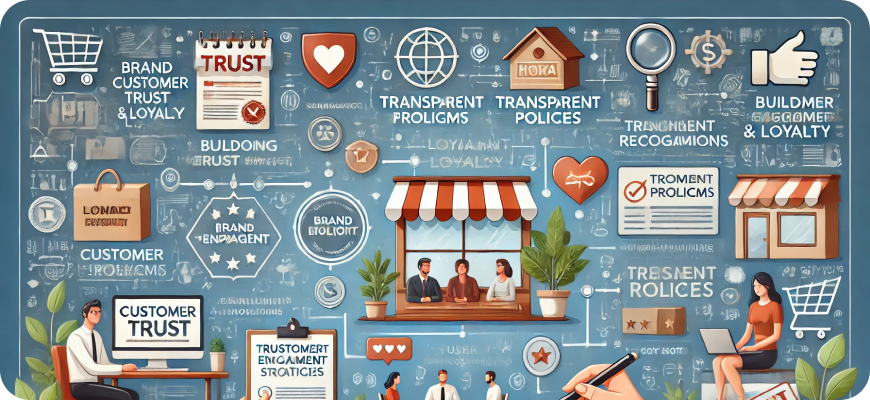
Conclusion
Building customer trust and loyalty requires a multi-faceted approach that prioritizes transparency, exceptional service, and personalization. By implementing these tactics, you can create a positive, secure, and engaging experience that encourages customers to return and advocate for your brand. Trust and loyalty aren’t achieved overnight, but with consistent effort, your brand can build a loyal customer base that contributes to long-term growth and success.

